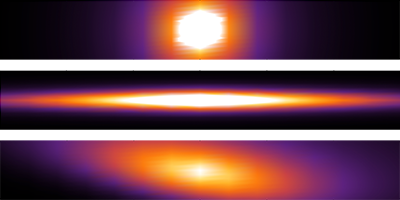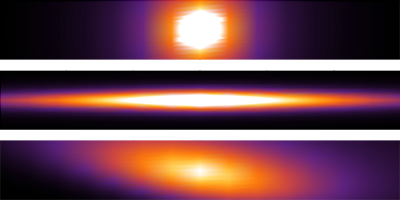A Second Dish of Dark Matter
Current cosmological theory suggests that our Galaxy, like others, sits in the middle of a large ball-shaped concentration of dark matter. However, there may be other shapes lurking in this hidden gravitational scaffolding. A new paper in Physical Review Letters proposes the existence of an additional type of dark matter having strong interactions that cause it to form into large disk-shaped objects. Such dark disks would presumably overlap or “double” up with the disks of conventional matter in galaxies like the Milky Way.
Models of dark matter typically assume it is composed of a single type of particle. The currently favored candidate is a cold, relatively massive particle that interacts only weakly with other particles, including itself. Such dark matter can account for the velocity distribution of stars observed in galaxies. It also agrees well with data from the cosmic microwave background. But these successes do not exclude contributions from other types of dark matter.
JiJi Fan and colleagues from Harvard University explored adding “partially interacting” particles into the dark matter mix. They estimate that a small fraction (around ) of dark matter—an amount comparable to conventional baryonic matter—may be of this more interacting type. Their model assumes a heavy dark “proton” and a light dark “electron” that interact through a kind of “dark electromagnetism.” Processes such as bremsstrahlung and Compton scattering are efficient enough to allow this small fraction of dark matter to cool down and collapse into disks. Dark disks may be detectable in several ways. For example, their gravitational effects might show up in upcoming star surveys, or cosmic-ray observations could reveal a signature from self-annihilations of dark disk particles. – Michael Schirber





